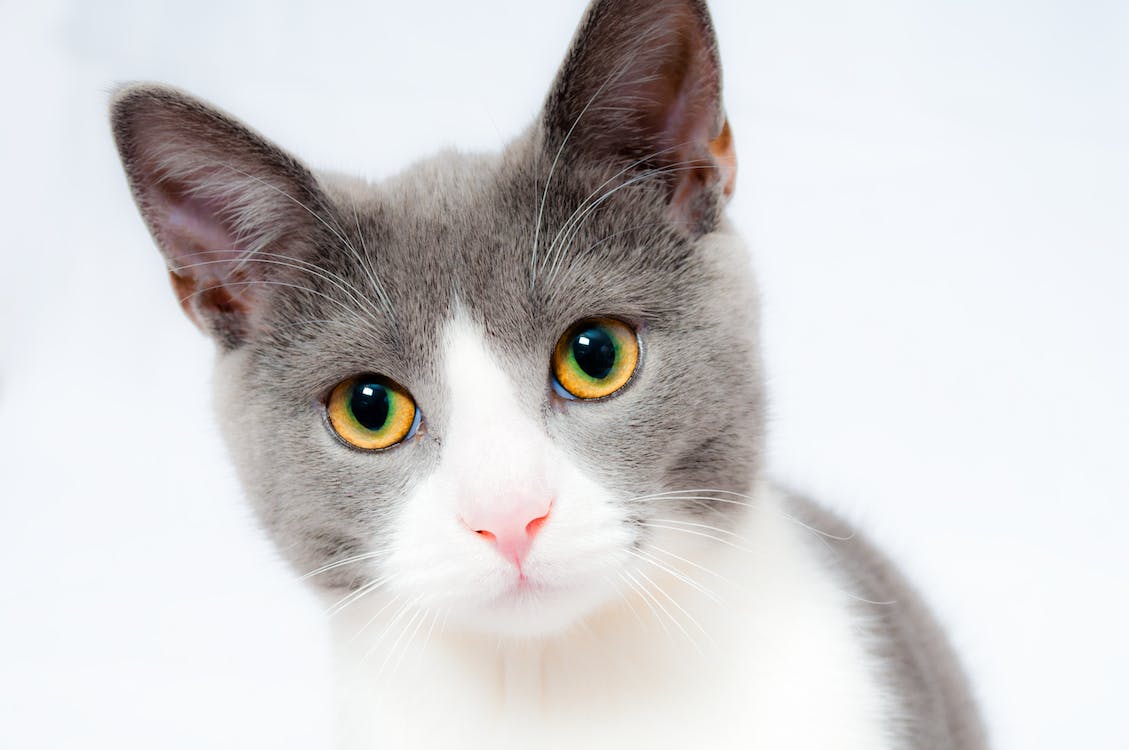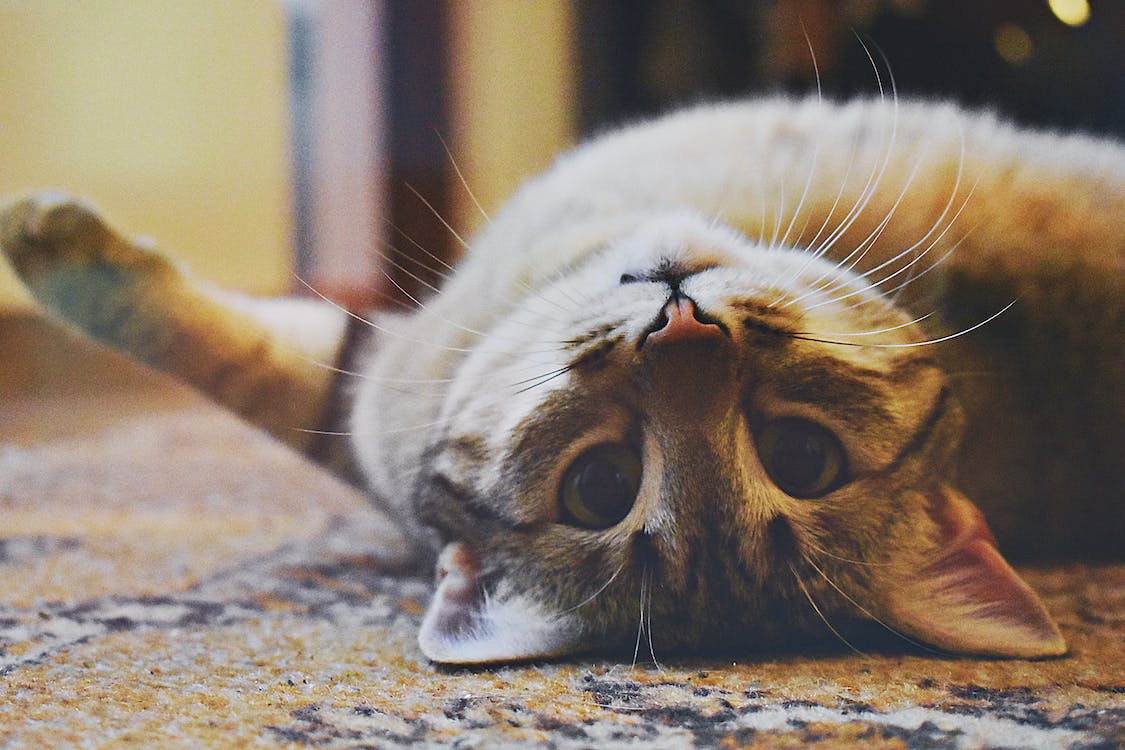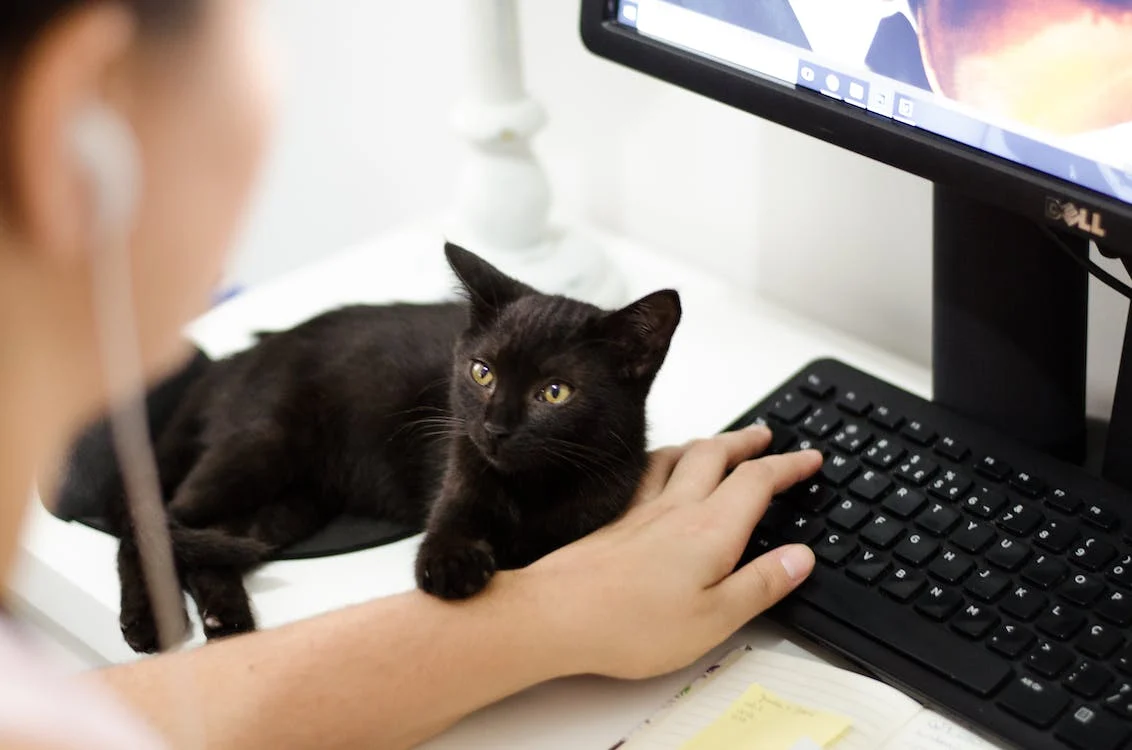As mysterious and alluring companions, cats have long maintained a unique place in our hearts. They have a special way of enticing us into their life, from their calming purrs to their independent personality. Despite the happiness kittens offer, many cat owners find themselves perplexed by the mystery that frequently surrounds cat behavior. Why does your cat wake you up early in the morning? Why do they have such a fascination with cardboard boxes? And maybe most significantly, how can you make sure that your cherished pet has a long, healthy life?
Join us as we delve into the intriguing realm of your cat’s mind and analyze their peculiar behaviors, body language, and vocal clues. We’ll offer tips that help both beginner and seasoned cat owners, from comprehending their nighttime habits to demystifying litter box preferences. This article offers more than just behavioral advice; it also serves as a road map for ensuring the physical and mental well of your cat.
Understanding Your Cat
Body Language
You could occasionally wonder about a change in your cat’s behavior and what it might indicate, or you might want to know how to determine whether your cat is content.
Although they may appear to be challenging to read, cats leave behind a variety of telltale indicators that can help you understand what they are thinking and how they are feeling. Your cat’s body language, emotions on their faces, vocalizations, and movements of their tails should already be able to reveal some of their more noticeable moods.
Like humans, cats experience a wide range of fundamental emotions, including joy, sadness, fear, relief, and even frustration. Understanding these feelings and knowing how to act on them when necessary is the key to a strong connection with your cat.
Cat Vocalization
Cats surely do not hold back when it comes to expressing their needs or thoughts, from many meow variants to a variety of strange noises. The issue is that it is not always simple to comprehend cats. You are sure to get scratched if you cannot distinguish between a furious meow and a playful one!
- Trilling – a voice that falls between a purr and a meow. It is frequently used to greet someone or to get your attention by being utterly lovely. That is the cutest thing ever!
- Hissing and growling – The hiss and growl routine is never a positive indicator, and it should only be used in instances where they are scared or angry. It is generally better to just keep away if you have no reason to believe your cat is hurt or in pain.
- Silent meowing – Sometimes a meow that is so quiet you can hardly hear it is an indication of fatigue, hunger, or dehydration. Of again, if you have a happy, healthy cat, they may just be trying to tug at your emotions with this.
- Chirping – Your cat is demonstrating their hunting prowess by attempting to lure oblivious wildlife. Instead of gushing about them and laughing at the cute noise they make, try not to frighten off their prey.
- Purring – What does a cat purr indicate? Does this mean your cat adores you? Be at ease. One of the finest noises you may hear from your furry friend is the silky, vibrating purr! Although a cat’s feelings might be mysterious, hearing a purr is a surefire indication of your kitty’s contentment and love.
- Yowling – This specific cat sound, which like a combination between a yodel and wailing, is one of the most annoying. Although spayed and neutered cats can yowl as well, yowling is a mating cry that is often reserved for cats in heat.
Social Behavior of Cats
Cats are gregarious creatures that, when living in the wild, form social groupings made up mostly of queens and their young. The availability of food supplies has an impact on the group’s density. There is far less breed variety and a considerably smaller range of variations in both physical and behavioral aspects in cats than there is in dogs because they have been subjected to less selective breeding than dogs. Cats often hunt alone and feed on rodents and other tiny animals, which is perhaps why they get along so well with us. Typically, kittens choose out the prey that their mother hunts. If offered a restricted choice of foods while they are young, kittens may also develop limited dietary preferences based on texture and flavor.
Multiple generations of related females can coexist in a free-range setting, allowing for the collective upbringing of kittens. Cats can remain in the social group until they are 12 to 18 months old. The age of sexual maturity is around six months. If not bred, queens often cycle seasonally (most frequently from winter to summer) every three weeks. At 5-8 weeks of age, weaning takes place. Despite the fact that some kittens may suckle much later, this is usually for social rather than nutritional reasons. Early weaning of kittens causes play and predation to begin sooner.
Compared to dogs, cats have a significantly shorter period of socializing, which may start to decline by the time they are 7-9 weeks old. Exposure to cats, other animals, humans, and a diversity of environmental cues is crucial for preventing fear during this brief window. Kittens who have been handled often by humans between the ages of 2 and 7 weeks may be friendlier, more outgoing, and less prone to aggressiveness. Hand-reared kittens may lack cat social skills and be overactive in social and object play; however, if a kitten is raised in the house with other cats and given playtime with wand-type toys, these issues may be avoided. The father’s genes, in particular, are very important for personality. Depending on their behavior, cats can be classified as being energetic, lively and aggressive, calm and friendly, or timid and shy.
Social play, which includes biting, chasing, and play fighting, starts at roughly 4 weeks of age, peaks at 6 to 9 weeks, and then starts to diminish around 12 to 14 weeks. In social play, people may be the target, particularly if there are no other cats around to play with. Object play starts between 6 and 8 weeks and peaks at roughly 18 weeks. Playing with items or social partners can replicate the predatory sequence and include stalking, pursuing, pawing, pouncing, and biting.
Cats may grow to favor certain surfaces for eviction. Before and after going potty, many cats may dig (perhaps as a visual mark or to bury urine and excrement). Cats are highly sensitive to smells, and they may react by marking with urine (spraying) or excrement, scratching as a visual and scent mark, or rubbing their body’s sebaceous glands on objects or other cats. Neutering can help avoid or treat issues like urine marking, wandering, and fighting with other cats that may be caused by androgens.
Common Behavioral Issues
- Rugged Playing – Sometimes it is difficult to determine if a cat is playing a game or just having fun. They swat, bite, scratch, and pounce. Additionally, play bites and scratches still hurt. Use balls or a fake mouse for batting as toys to help your cat release some of its energy. They can have endless joy pouncing on a paper bag. And never encourage a cat to play with your hands or feet in order to keep yourself safe. As a cat gets older, nips turn into bites.
- Obsessive Grooming – Cats groom themselves to feel calm and to look nice. Their skin might become damaged if they overdo it. Check for skin issues first with your veterinarian. Play with your cat to comfort them and make them feel relaxed if they are grooming themselves excessively due to stress, such as a change in routine or the arrival of a new pet in the home.
- Avoiding the Litter Box – Is your cat refusing to use the litter box? They frequently refuse to use the box because they dislike the litter or the box itself. Your best option? Use unscented litter in an open container, and scoop it once a day at the very least. Place the box in an area with little traffic. Use many boxes, and experiment with various litters.
- Spraying or marking urine – Cats may signal to other cats to back off by peeing on them. They frequently engage in this behavior when they are at odds with another cat, feeling insecure, or trying to find a partner. A cat is more likely to mark its territory if there is conflict, there are numerous cats living in the home, or the routine is changed. Have your cat neutered or spayed to end the spraying. Where they sprayed, clean the area with an enzyme. Consult your veterinarian for guidance if your cat keeps spraying.
- Extreme Nights – Cats like having fun, frequently late at night. If you are aware that your cat becomes agitated or hungry when you’d rather be sleeping, make plans in advance. In the evening, amuse them with games until they go asleep. Just before bedtime, feed them. You may also use a timed feeder to provide food later so they do not have to wake you up. Don’t get up until you believe they are wounded. If you do not, you will be encouraging your cat to keep acting that way.
- Scratching – Cats enjoy scratching. They play, stretch, hone their claws, and mark their territory while doing it. Your carpets, curtains, and furniture will all suffer as a result. Install several scratching posts throughout your home. To prevent them from toppling over when your cat begins to scratch, make sure they are strong. Then rub catnip on your cat or hang toys on them to get them playing.
- Obsessive Action – Your cat could repeatedly do something if they just can’t help themselves. It may be completely normal. But occasionally, it may be a red flag for anything wrong. Consult your vet if you have any concerns. Also, provide your cat with enjoyable diversionary activities, such as climbable objects or a fish tank to observe.
- Multiple meowings – Adult cats do not meow at one another. Meowing is mostly for humans. Cats meow to greet people, request food, or attract attention. Do not give them food if they cry out for it if she meows for it. When they are silent, pay them attention if they meow for it. Consult your veterinarian if your cat meows a lot and you don’t know why or if they appear upset.
- Separation Anxiety – Cats are incredibly sociable animals. They enjoy having you around. They could become loud or spray your home if left unattended. Try to ignore your cat both when you return and 15 minutes before you depart. Some of his favorite toys should be left out, and when you return, they should be put away. Play with them frequently to help them burn off extra energy so they can relax on their own. If you still require assistance, see your veterinarian about additional measures or medicines.
- Aggression – Inform your vet straight away if your cat starts to act aggressively. If a cat displays warning signals like stiffened legs, enlarged eyes, or snarling, stay away from it. Even if you have a close relationship with the cat, avoid touching or approaching it. It is possible for your cat to feel worried or afraid, not “bad.” But safety must come first for your cat and everyone else in your home, so seek expert assistance.
How To Communicate With Your Cats
It is astonishing how much your cat can comprehend you, but how can you make them understand you? Cats are not really interested in what you have to say, but dogs listen to orders and your voice. This does not imply, though, that your cat doesn’t comprehend you.
Cats are (at least) as adept at understanding spoken language as dogs. Another problem is the way they act as though they don’t comprehend us.
Even if your cat acts as though they can’t hear you, you should still talk to them. A timid, fearful cat may be persuaded to snuggle with you by your soothing, comforting voice. Similar to this, a forceful, sharp voice can assist you in training your cat to stop undesirable actions like batting or clawing the furniture. Of course, in practice, cats will behave as they like (in theory).
Use a pet camera to talk to your cat while you’re at work. They are missing you, even if they do not express it. Their furry heart is sure to soften a little when they hear your voice and are then given a reward from pet camera.
Health and Behavior
The ability to mask discomfort and disease is a survival skill that cats have inherited from their wild ancestors. Therefore, it is our responsibility as responsible cat owners to recognize the subtle and not-so-subtle indications that something may be wrong. These critical signs, which might include changes in diet and grooming routines as well as altered litter box behaviors or strange vocalizations, will be revealed. Knowing your cat’s distress signals can enable you to quickly seek veterinary treatment when necessary, perhaps averting pain and ensuring the general wellbeing of your furry friend.
Cats are exceptionally delicate animals, and their mental and physical wellbeing are closely related. Their quality of life can be substantially impacted by stress and worry, which can result in a variety of behavioral problems. By being aware of these different symptoms, you can take preventative action to provide your cat with a peaceful and loving environment, thus ensuring a happier and healthier living.
An important and sometimes underappreciated part of cats’ wellbeing is the relationship between their nutrition and behavior. What your cat eats may have a significant influence on their mood, level of activity, and temperament as a whole.
Nurturing a Positive Relationship
Start to socialise your cat when they are young
When you initially bring your furry friend home, give them time to get used to the new sights, sounds, and scents by letting them explore on their own terms. After a few days, introduce them to the rest of the house and any other pets after keeping them in a separate room with all of their supplies.
If you are introducing children to your new cat, make sure they are aware not to grasp for the kitty as this might destroy the friendship and frighten your adorable furry bundle of joy. Gradually enable them to be caressed and handled by you and other family members without forcing them into any interactions.
Make sure you have everything their little hearts desire, right from the beginning
Remember that you need one of each resource for each pet, plus one extra, and that they need to be nearby (but away from other pets). The same is true for scratching posts, high perches they can leap on, and litter pans. Your cat will feel comfortable, in charge, and more likely to be at ease when they have all they need, which should encourage them to interact with people.
Learn cat-talk
Learn to read your cat’s body language. Your cat’s tail, eyes, and ears may say a thousand words, so it’s crucial to understand when it’s pleased or exhibiting symptoms of stress or fear. Did you know that if you blink extremely slowly at a cat, you are telling them “I love you”? However, avoid staring straight at them since they will run away if they see this as dangerous. Your cat is likely to be at ease and comfortable if its eyes are partially closed, ears point forward, and whiskers are relaxed.
Don’t force it
Do not grab your cat and attempt to push them to get on your lap; let them take the initiative! Allow them to approach you at their own pace (a little reward may even tempt them initially!) and allow them to escape freely when they begin to wiggle to escape. This will increase their trust in you and increase their propensity to cuddle up to you in the future.
Learn their favourite soft spot
Does your cat occasionally transform into a mini-purring machine? Since their facial glands are located here—at the base of their ears, around their cheekbones, and beneath their chin—cats typically like having these areas caressed and stroked. They don’t like having their back, tail, or stomach touched.
Set aside some kitty time
Most cats are most active during dawn and dusk; it may seem a little weird to you that they are racing about the home at high speed just as you are trying to sleep or unwind. But this is a natural impulse, and this is when they would have hunted in the wild. So refrain from attempting to play with your cat during these times. The greatest time to play with your cat is a few times throughout the day. Just 10-15 minutes of playtime with their favorite toy can help to wear them out, create a routine, and strengthen your relationship.
Be approachable
As you wait for your cat to approach you, sit nearby with their favorite cushion or blanket. They will be more likely to feel good about approaching you since they will have left their scent on the blanket and have pleasant associations with it. With a small reward, you can entice them closer. After they’ve smelled your palm, they could be more willing to approach and investigate more. Take your time and establish a calm environment rather than moving rapidly or startling your cat.
Nurture Your Kitty Bond
Giving your cat room when she needs it, spoiling them and making sure they have all they need, along with some wonderful treats and playtime, is actually a lot simpler than you may think. Soon, you’ll have the purrfect relationship with your cat!
Conclusion
In conclusion, our exploration of cat behavior has given us invaluable knowledge that will help us better understand and care for our furry pals. We’ve developed skills for reading their body language, spotting disease symptoms, and handling stress, all while emphasizing how important nutrition is in determining how they feel. With this information, we can foster closer relationships with our cats and ensure that they live long, fulfilling lives as valued members of our households.





